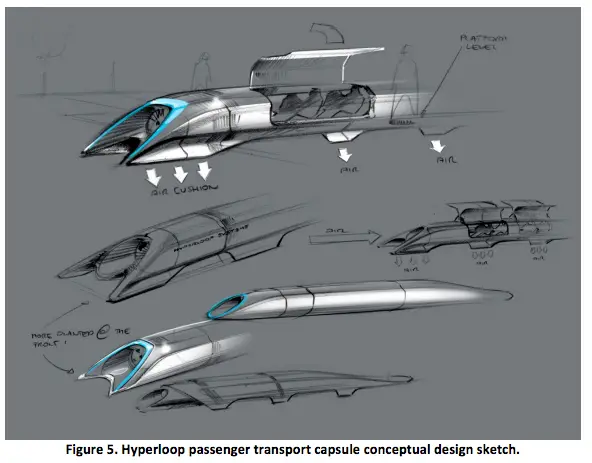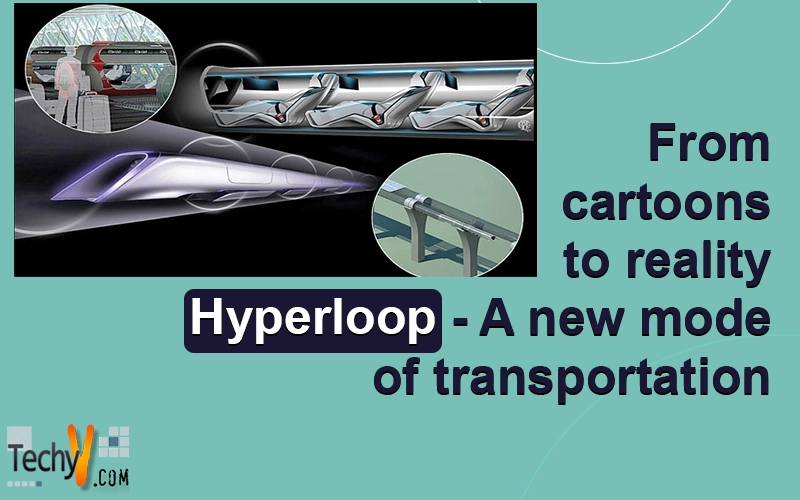What is Hyperloop[?
Hyperloop- a brainchild of Elon Musk, is a transportation system similar to the tube systems envisioned in classic sci-fi, such as The Jetsons, Futurama, etc. It is a reaction to the California high-speed rail system currently under development which according to Elon Musk, the billionaire inventor, and CEO of aerospace firm SpaceX and Tesla Motors, is one of the slowest and most expensive project. The system is crash-proof, weather-proof and immune to adverse conditions. In the recent tests, its speed has been demonstrated and is believed to complete the distance between LA and San Francisco in less than 30 minutes. In this system, cars will be propelled in a pneumatic tube at a very high speed of 700-800 miles per hour. The test was conducted in the desert outside Las Vegas by Hyperloop One.
Fig: comparison between different modes of transportation
How Does It Work?
Hyperloop has four features:
- The passenger capsules inside the tube aren’t propelled by air pressure like in vacuum tubes because maintaining the vacuum in hundreds of miles of tubing is difficult. One small leak and the whole system shut down. Therefore, electromagnetic motors would be used along the length of the tube instead of vacuum.
- The tube would have low pressure instead of complete vacuum. A cushion of air will surround the pods. There will be a compressor fan in front of the capsule which will redirect air to the back of the capsule to the air bearings, instead of creating a syringe-like condition in which the whole volume of air is pushed out of the tube creating a pressure buildup due to air displacement.
- Air bearings will levitate the capsules above the surface of the tube just like a puck gliding over an air hockey table providing almost frictionless experience.
- To be weather and earthquake proof, the tubes are made to be self-powering and unobstructed. The system is built in such a way that the tubes containing tracks are not fixed rigidly at any point, thus providing sufficient and necessary flexibility to overcome the jolts of an earthquake. There are solar panels on the top of the tube to supply power to periodic motors.

What are the Challenges to HYPERLOOP?
- Safety:
There are concerns about the fundamental engineering design. Hyperloop design takes into account the issue of an earthquake. The tubes are mounted on a series of pylons spread along the route which will allow for slip due o thermal expansion and earthquakes ensuring the safety.
- Scaling Issues:
The test conducted in Las Vegas was on tracks just 300 feet longs. Scaling it to thousands of miles is a challenging task which includes maneuvering the pods on curvy tracks and building the tracks on tall structures like building and towers in case of crowded cities.
- Cost effectiveness:
Though energy-efficient, Hyperloop will not be cost effective. There are numerous issues with the project such as environmental clearance, public approval, legislations, etc. Although Elon Musk claims in his white paper that the total cost could be kept under 6 Billion Dollars, the doubts will be cleared after proper research and development in this regard.
What Is The Bottom Line ?
The project seems to be feasible, even though it is at a very nascent stage and a lot of challenges are in its way. A competition was organized by SpaceX wherein the students and engineer prodigies will submit their design and test it. Startups like Hyperloop Transportation Technologies and Hyperloop Technologies are also building their test tracks.
It remains unclear whether the project will be widely accepted or not. But Such Systems are the need of the hour due to increasing population burden and degrading environment.

















